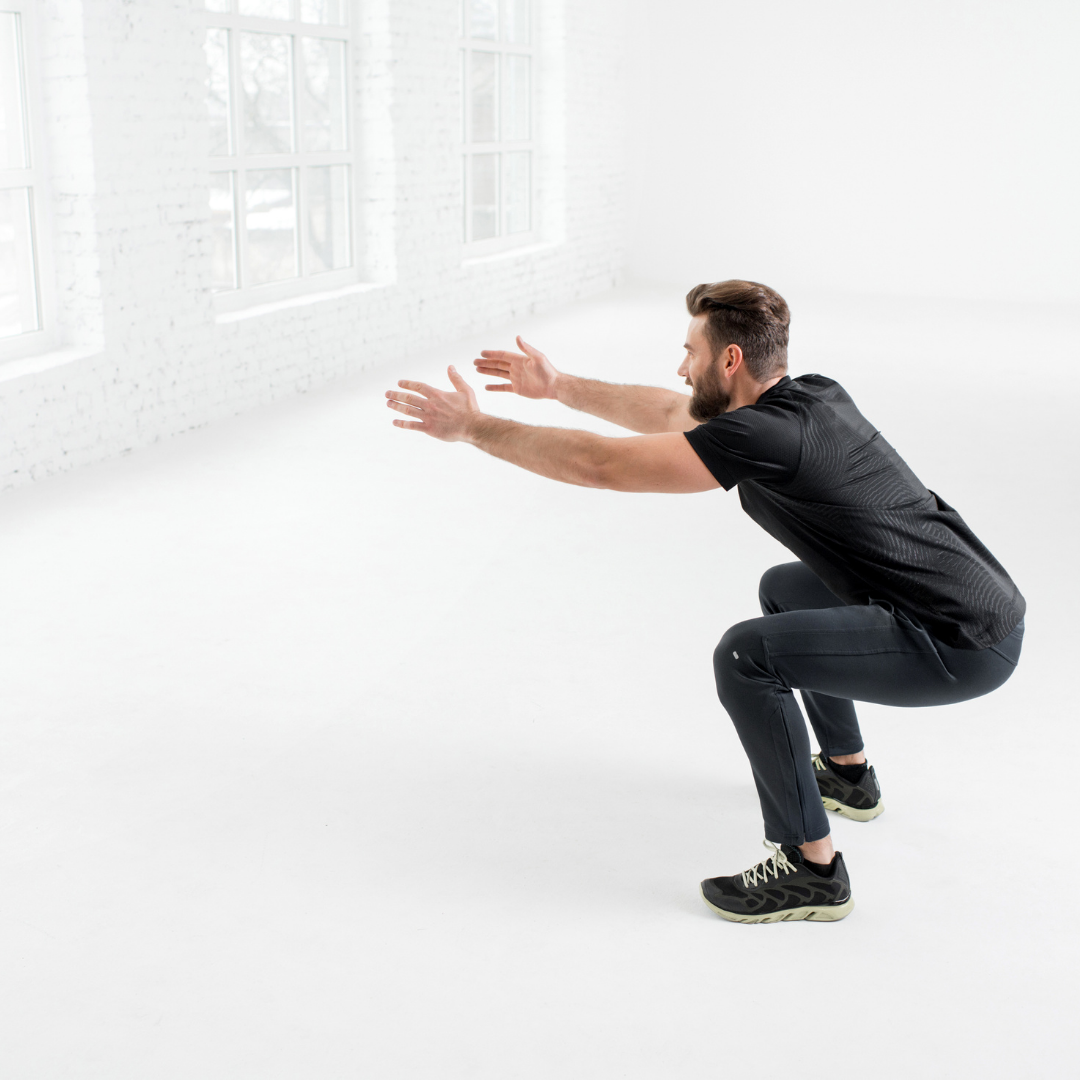Getting The Most From Squats: What To Know
Squatting is one of the most effective ways to strengthen your back, glutes, thighs, and legs. Squatting is the only truly functional exercise you can do with your entire body. That said, it’s also one of the most misunderstood. And that’s no surprise since the only people that squat are weightlifters, powerlifters, and football players.
Squatting is a great way to help build lean muscle mass. But, if you are doing it the wrong way, it can also be a terrible way to hurt yourself. With squats, there are two main types: good and bad. Bad squats often come from a lack of form and proper progressions, with the person squatting leaning forward and squatting with their knees too bent. These forms of bad squats can cause low back pain, knee pain, and strain to the ankle and foot.
What is Squatting?
People who know anything about exercise and/or weight loss know that the most important part of any workout is the squat. Your legs and hips work hard to move you up and down from a standing position, and your muscles and joints will work even harder as you lift more and more weight. Squats also work your core muscles too. And as you can see, squats can do more for your weight loss goals than just exercise. They can even help you to lose weight and stay healthy.
There are many ways to describe what squatting is, but the generally accepted definition is that it is the act of placing one’s body weight on the ground, bending at the knees, and pressing the entire body downward with the hands. To many, it seems simple enough. However, many people are discouraged from engaging in the movement due to the perceived “unnaturalness” of it.
Fitness gear needed for squats
Here are a few pieces of fitness gear that can help get the most out of your workout sessions.
A barbell and a barbell pad — A barbell is a long metal bar that is loaded with weight plates and is used for adding resistance during squats. The likes of GND Fitness Barbell Pads can help cushion the equipment, reducing discomfort and pressure on the neck and shoulders.
A Squat Rack or Power Rack: A squat rack or power rack is a sturdy frame with adjustable safety bars or J-hooks that hold the barbell at the desired height. It provides stability and safety during squats.
A weightlifting belt: A weightlifting belt is worn around the waist to provide additional stability and support for the core during heavy squats. It can help maintain proper form and reduce the risk of injury.
Lifting Straps or Gloves: These are often used by individuals to improve grip on the barbell during heavy squats.
Squat Shoes: Wearing shows specifically designed for the purpose of squats can provide better stability, support, and proper foot positioning during squats.
Benefits of Squatting
Squatting is a low-impact activity that can be beneficial for your health and helps to strengthen your body and core. Squatting is a low-intensity exercise that is good for your health and can help strengthen your back and abdomen.
People who do not perform proper squats can suffer from back pain and muscle weakness, leading to injuries and poor performance at work. Even people who perform squats incorrectly could suffer from back pain and muscle weakness, leading to injuries that could require Back Pain Treatment and poor performance at work.
Squatting helps to improve the functionality and flexibility of your joints and can help to prevent injuries. Squatting also helps to strengthen the core muscles.
Squatting is a physical exercise that involves sitting or kneeling on the floor with the knees flexed to a 90-degree angle and the feet flexed so that the toes are pointed down. Squatting is a great exercise to target the thighs, buttocks, and hips. It also strengthens the abs, glutes, and spine. Squatting is a very effective exercise for people with a lot of abdominal fat. It stimulates a lot of transverse abdominis (the deepest abdominal muscle) and targets the gluteus maximus (the main muscle of the buttocks).
Different Ways of Squatting
Squatting is a method of exercise that has been gaining popularity in recent years. It is in many ways similar to the traditional squat in the playground. However, in this exercise, you are also in a kneeling position, which in turn allows you to absorb the impact of your body weight in your knees, hips, and bottom. If you’re trying to learn How to front squat, there are a number of online articles and videos that can help. To know more, check blogs of Steel Supplements.
The traditional sit-up exercise has long been the go-to exercise for developing upper-body strength. However, it also works the lower body, including the thighs, knees, and ankles. So, if you’re trying to build up your lower-body muscles, you might consider adding these variations to your routine.
You can do this exercise in di positions:
- Basic Squat
- Wide Stance Squat
- High Stance Squat
- Reverse Stance Squat
- V Stride Squat
Squatting is perhaps one of the most difficult exercises to learn because of its high level of demand on the glute muscles. I know many people who have tried to learn to squat, and they all tell you that if you do it correctly, it will not be easy.
The squat is a very powerful exercise, and while there are several different ways to perform it, there are a few ways you should be careful with. You do not want to perform the exercise incorrectly with any strength and conditioning exercise, especially something like the squat. If you do not know how to perform the movement properly, you will injure yourself or hurt your back or knees.


